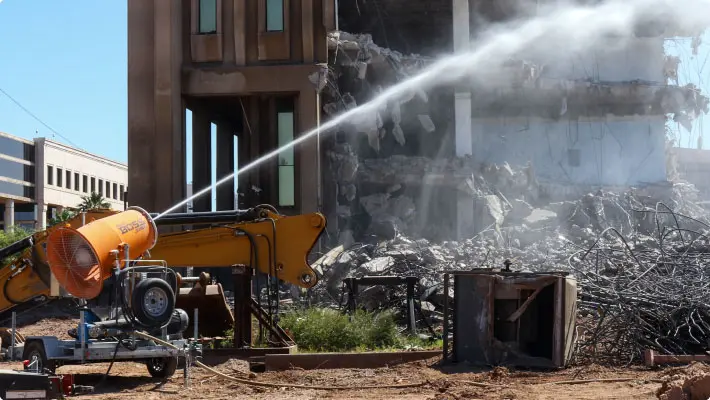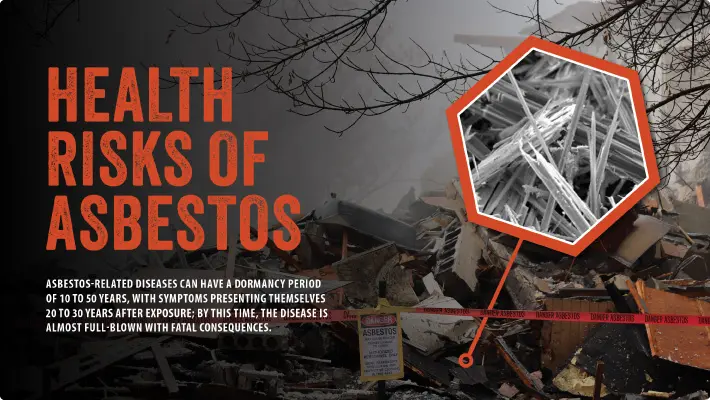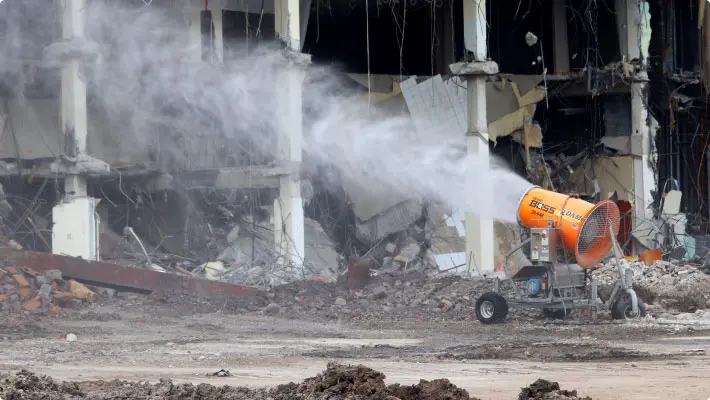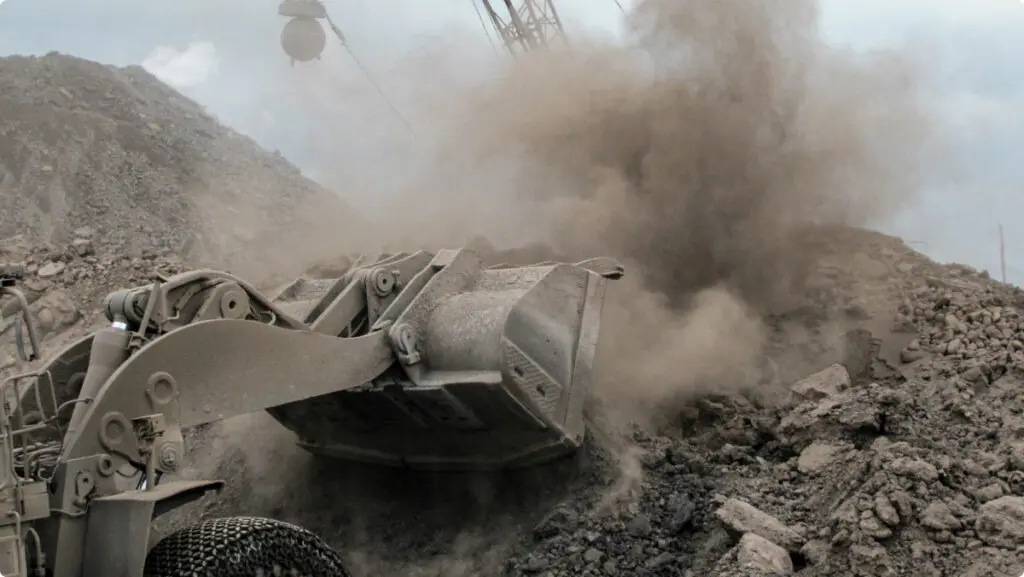

The Medical University of South Carolina (MUSC) in Charleston is one of the state’s top hospitals, ranked among the best pediatric medical institutions in the country. The facility is in the process of expanding and upgrading -- supported by donations, grants and state contributions -- and has begun construction of the MUSC Shawn Jenkins Children’s Hospital and Pearl Tourville Women’s Pavilion.
The team of Robins & Morton/Cumming/Brownstone started the demolition of a series of concrete buildings on the MUSC grounds, which are to be replaced by a new $385 million state-of-the-art concrete, glass and steel facility scheduled to open in 2019. The project involved demolishing 4 buildings from a 185,000 square foot (17,187 m2) area in 6 months. Being surrounded by fully operational hospital facilities, the goal of the project was to conduct a compliant and environmentally-responsible demolition, with the lowest amount of fugitive dust emissions possible.
SYSTEMATIC STEPS
To begin the takedown, boom excavators with hydraulic attachments cut thick rebar-reinforced concrete supports into measured chunks. Metal, concrete, brick, wood, lighting and piping were separated and transported to recyclers throughout the demolition of the outer and inner structure of the buildings.
"Approximately 7000 tons of material in total were hauled from this site in containers and dump trucks, and we were able to recycle 94% of it. The LEED silver requirement is 85%, so this was one of the most environmentally sound large construction projects in the area."
Bobby Teachey - Project Manager for Construction Management Team at Brownstone Construction Group
One of the challenges the team faced was a significant amount of dust produced by demolition activities, debris separation and the loading process. In addition, adverse weather conditions and debris storage piles -- generally between 4 and 6 feet tall -- had the potential to contribute to air quality issues.

IDENTIFYING CAUSES OF DUST EMISSIONS
The complexity of the demolition project began with its proximity to other medical facilities treating patients who could be sensitive to the demolition and construction environment. Sitting directly on the site line is the Charleston Center, a rehabilitation clinic, and the MUSC Hospital Ashley River Tower, the newest cancer care center built in 2008. Surrounding the location is the entire pediatric, patient care and cancer research infrastructure of MUSC, spanning several blocks. These sensitive environments caused hospital administrators concern over the effect of atmospheric particulate levels on patient treatment and recovery, so board members required extra monitoring and data collection.
In addition, a densely populated community surrounds the facility, where high airborne particulate levels could yield complaints from neighbors. The site is also very close to a major highway, where the thousands of people who pass in traffic everyday could be affected. The weather in the area plays a large role in the management of fugitive dust as well, since the site is near the tip of Charleston’s South Channel leading into the Atlantic Ocean. Located on the Ashley River inlet, at several times during the year, high winds off the ocean can intensify as breezes move up the channel and into the river basin, contributing further to the challenges of effective dust control.
All of these factors presented obstacles to developers and contractors in charge of demolition and construction. “We knew we were going to have to be extremely meticulous about emission monitoring and dust prevention,” said Teachey. “However, the project plans were already in line with the LEED Silver requirements, which contain similar air quality provisions."
READY FOR A QUOTE?
Talk to a dust control specialist and get a quick quote for your project.
CREATING A DUST PLAN
With the local community and weather issues in mind, the air quality plan for the project was written in accordance with federal and state requirements, which restrict fugitive particulate matter (PM) measuring 2.5 microns in diameter or larger caused by industrial activity from affecting the air quality in the surrounding area. Tiny particulates less than 10 microns in size are considered “respirable,” which means that they can bypass the body’s natural defenses and enter deep into the lungs, potentially contributing to health issues -- especially for people with current respiratory conditions.
Gentry Jones, Safety Manager for Robins & Morton (the senior association member and developer on the project), oversees the monitoring and compliance of fugitive dust emissions for the site. Jones used a hand held personal dust monitor to measure and record particulate emissions at 14 points, both on the ground and on rooftops of the surrounding facilities. He also regularly monitored air intake filters of surrounding MUSC facilities for signs of increases in particulate matter.
To ensure dust levels were compliant with MUSC expectations and air quality regulations, Robins & Morton required the use of a DustBoss® suppression system from BossTek in the air quality plan. “Our industrial hygienist outlined the procedures and wrote the plan, and we provided the details of the equipment we wanted to use to the team,” said Jones.

PULLING FUGITIVE DUST PARTICLES FROM THE AIR
Project managers rented two DustBoss DB-60 Fusion™ atomized misting cannons and used them at various points on the site throughout the project. According to BossTek CEO Edwin Peterson, the tall surrounding buildings and the site’s proximity to the river presented a consistent issue with wind, at some points rising to near-hurricane force gusts. “This can make the dust from operations and storage piles kick up and swirl, then travel a long distance,” he observed. “Surface suppression wasn’t going to be adequate. They needed technology that offered suppression of ground level dust and airborne particles, and the DustBoss addresses both in a single machine.”
Designed for industrial-sized outdoor applications such as petcoke and coal storage facilities, slag cooling piles and fine fly ash disposal sites, atomized mist settles gently on surface material, creating a damp outer layer without saturation or excessive runoff. With a wide area of distribution, atomized mist raises the ambient moisture level and prevents airborne dust particles from leaving designated areas. Demolition contractors have discovered that atomized mist is far more effective than the manual spraying often used in such operations.
To control air quality on previous demolition projects, Teachey revealed that buildings were taken down in small chunks to mitigate dust kicked up by the ground impacts. Smaller debris piles were created and saturated with water overnight, then loaded before they could dry in the mid-day sun and be affected by wind. These methods slowed the demolition process by creating more steps.
Currently, the most common methods of airborne dust suppression on demolition sites involve using water delivered from fire hoses or large industrial sprinklers. But experts familiar with dust mitigation technology know that most spray methods are largely limited to surface suppression and the runoff can lead to wastewater compliance issues. Only atomized mist is capable of offering both airborne dust control and surface suppression over a large area, without saturating debris and causing extensive runoff.

MATCHING DROPLETS TO PARTICLE SIZES
Below the size of 200 microns, dust particles are light enough to travel long distances on air currents, even without the assistance of a strong wind. Operators and regulators have discovered that to prevent the dust from remaining airborne, the size of the water droplet must roughly match the size of the particle.
Hoses and large sprinklers common to demolition projects typically produce droplets between 200 and 10,000 microns in size, large enough to create a phenomenon known as the “slipstream effect.” A slipstream is created when a mass moves swiftly through the air and creates a current similar to air moving around the wing of an airplane, keeping the craft aloft. A large falling water droplet produces the same effect, so when small airborne particles encounter larger water droplets, they tend to get caught in the slipstream and are directed around the droplets, allowing the dust to remain airborne.
BossTek’s system was specified by name because the company manufactures a highly effective design that utilizes special atomizing nozzles and a powerful ducted fan configuration. This design introduces millions of tiny droplets approximately 50-200 microns in size – roughly the size of the majority of dust generated by demolition projects. Due to their small mass, atomized mist droplets produce virtually no slipstream and are light enough to travel with dust particles on air currents, increasing the chance of a collision and allowing the droplet to drive dust to the ground.
“At first, my personal dust monitor registered considerably more airborne particulates, but yet the off-site readings showed no increase in emissions whatsoever, which didn’t make sense,” said Jones. “Then I realized that the droplets were small enough that they actually showed up as particles, and that changed the way I read the data. Instead, I found that there was a drastic reduction in airborne particulates.”
“We were able to take down much larger pieces from the buildings and form bigger storage piles without needing to be too worried about the dust created, which improved our efficiency immensely,” Teachey said. “The mist pulled the particles right out of the air. You could see them fall."
DEMOLITION DUST SUPPRESSION
Mounted on a roadworthy trailer with a standard pintle hitch, the DB-60 Fusion system uses a specialized barrel design with a powerful 25 horsepower (HP) industrial fan on the back end and a misting ring on the front. A 10 HP (7.5 Kw) booster pump draws water from a 1-1/2 inch (38.10 mm) fire hose and increases pressure to as much as 250 PSI, supplying the circular manifold fitted with atomizing nozzles. The nozzles fracture the water into an engineered mist, and the fan throws millions of tiny droplets in a 200-foot-long (60 m) cone, covering up to 62,800 square feet (5,834 m2) when using the 0-180º oscillator.
The unit is powered by a 45 KW Genset with a John Deere diesel Tier III Flex engine and fed by a 100-gallon (378 L) fuel tank. Delivering approximately 24 hours of runtime, both are located on the trailer and housed in a protective metal cabinet. The machine’s functions can be controlled via digital touch screen display mounted on the unit in a NEMA 3R enclosure.
As of February 2019, DustBoss DB-60 Fusions are equipped with Tier IV Final-compliant geneators, ensuring compliance in all 50 states.
The entire system can be shut down, hitched to a pickup truck, moved easily around the site and positioned by a single worker within minutes. Unlike large sprinklers and hoses, which are usually maneuvered by workers standing near large machinery and in proximity to dangerous impact or loading zones, the DustBoss is fully programmable, requiring no manual labor for ongoing operation. This allowed workers to concentrate on other important tasks further away from the most dangerous areas, creating a safer and more efficient worksite.

PROPER PLACEMENT
“Standing on the roof and doing my testing, I was able to observe where the most dust was being produced and the effect of current weather patterns on operations, and then help direct the most effective placement of the units,” said Jones.
"Being mobile allows the DustBoss units to be effective quickly, anywhere on the site. All we have to do is hook up the water supply."
Gentry Jones - Safety Manager for Robins & Morton
During demolition of the upper building levels, the vertical adjustment and long throw distance of the dust suppression cannon allowed mist to be delivered wherever the boom could reach. By applying thousands of pounds of pressure at a single point in the concrete, hydraulic recyclers create a tiny explosion at the sheering point, causing dust to travel over the roof of the structure.
According to Peterson, the most effective method during upper level operations in windy conditions was to place one DustBoss at the point of the sheer, and the other on the opposite side of the building. Smaller, lighter droplets offer air suppression high up, and larger droplets provide surface suppression in the impact zone, confining the dust to a limited area.
In demolition projects like the one at MUSC, loading material in windy conditions at debris storage areas can create large amounts of dust. By keeping the debris contained in one zone, a single atomization unit was able to cover the whole storage area. When the wind was calm, the atomized mist machines worked in tandem to offer dust suppression over the entire site. “A lot of times, they merely set the machines in adjacent Northeast and Southwest corners and let them run,” he explained. “If the wind shifted or began to swirl, they just repositioned them. It only takes a few minutes."

RESULTS
Proof of the effectiveness of atomized mist is in the daily data log. “I collected months’ worth of data, and I am impressed by how well the DustBoss kept the dust levels low, even at the smallest particulate sizes,” Jones said. “Regular checks of the air intake filters for the hospital revealed no significant increase in particulate capture.”
The diligent approach by operators to quickly recognize when and where the dust is being produced, and then properly adjusting the machinery to the conditions, contributed greatly to the success. Peterson pointed out that BossTek rental contracts were extended to suppress dust through the hot summer months.
With MUSC’s ongoing mission of top quality healthcare for both adults and children, the importance of using the best possible dust suppression methods available came to the forefront. “We are really happy that we were able to rent the right equipment, create a safe environment for workers and patients, and yet keep costs low,” Teachey concluded. “I was impressed with the ease of use, and there was no need for workers to be constantly out there spraying, potentially standing in harm’s way. We were able to focus more on operational efficiency, and that made a huge difference."
*Case study originally released in 2017
IMPLEMENT DUST CONTROL AT YOUR JOB SITE!
Receive a quick quote and talk to a dust control specialist today to stop fugitive dust!




